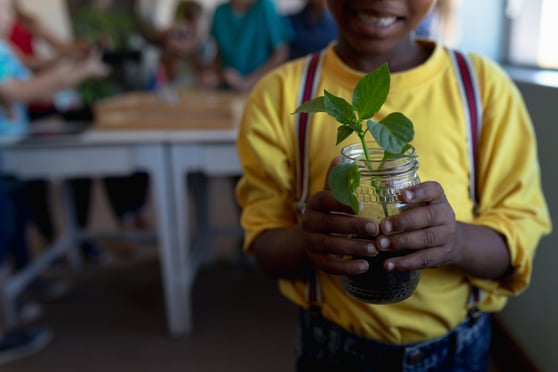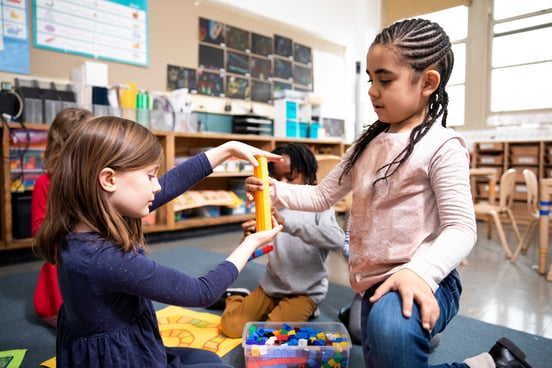
Math Assessment in California Schools: The Shift Toward Differentiated Instruction
Math assessment in California is changing. What used to be a compliance exercise or reporting tool is now becoming a...
ALI Staff | Published June 26, 2023
Learning about alternate teaching strategies is always exciting, especially when they can demonstrate proven results to engage students better.
After the excitement wanes, the challenge is figuring out how to integrate this strategy into your existing curriculum and/or rewrite it completely.
For those who have gotten a glimpse of project-based learning and want to try it, you don’t have to start with creating a project-based learning curriculum.
Taking a few activities and working them into your class can prove just as effective for those looking for new ways to get students interested in what you're teaching and motivate them to engage.
When it comes to project-based learning activities and science, we’ve compiled some examples of projects to get the ball rolling in your classroom.

Project-based learning is all about creating opportunities to get hands-on with the subject matter.
This collaborative work gives students time to develop skills beyond those needed to learn science. They learn communication skills, time management, and navigating a group dynamic.
Developing skills like these can better prepare students for when they enter a professional career, regardless of what role science plays in their future.
PBL projects also help students retain the science they need to know.
A PBL project is hands-on group work, making motivating students to contribute to the group and become active learners easier.
The level of engagement during group work can far exceed that of a lecture or even a classroom discussion.
Giving students the time they need to really work through project-based learning activities can help build their knowledge base and help them grow as a person.
Most PBL projects are also rooted in the real world. This creates an extra connection for students to the subject matter, making what they’re learning more relevant to them.
Students are more likely to stay engaged with the material when they understand why they should learn something.
They’re also more likely to retain what they learned.
Project-based learning activities must start with a project, but you can define how that project works.
Will you assign roles for each team member to take? Will you have a list of requirements each group must meet to complete the project?
You can step things out as much or as little as you want to guide students in the right direction and get the most out of each PBL activity.
Other characteristics of your project to consider include the following:
Remember, PBL projects require students to complete a process. They should have to research, design and produce a shareable finished product.
They should also be encouraged to look inside and outside the classroom for usable information.
Whether you’re creating an entire project-based learning curriculum or just want to add a few PBL projects throughout the year, these five activities make motivating and engaging your students in science easier.
Like a book report, this project-based learning idea requires students to select a topic, read up on it and create a presentation. The difference is that this report is completed as a group, so collaboration is necessary.
Break the class into groups of 4-5 and ask them to pick a topic. This can be an animal if they’re studying biology, an element on the periodic table in chemistry, an invention, a scientific formula…anything. Just make sure there’s an overarching theme.
Students then assign responsibilities within the group, work together to collect information, write a script, and produce their own video report.
Have a viewing day where the videos are shown (keep them under five minutes), and let the students offer feedback.
Already a staple activity in many physics classes, building that bridge out of Popsicle sticks has been a PBL project in disguise for decades.
This collaborative assignment requires trial and error, grit, determination, and physics. It’s all about problem-solving, working together, and understanding the properties of physics.
The physics bridge is just one example of how asking students to model or build in science can activate their imaginations and really bring them into science ready to work.
These activities are always fun, especially when they culminate in a challenge, like which bridge holds the most weight or which “net” catches the egg without breaking.
Thinking about where our energy comes from, global warming, pollution, and so many other issues in the world, it’s often the fresh eyes that can truly think outside the box to hypothesize a solution.
Asking your students to take a real issue and postulate a solution makes that real problem relevant to them and actively engages them in the world today.
Their solution may not actually work, but project-based learning ideas like these allow students to collaborate, collect information, and look at the world around them to tackle a real issue.
Trial-and-error will also come into play, along with healthy group discussions, as each team works toward agreeing on a solution to present to the class.
Sometimes, grabbing students' attention is easiest when you center a project around a hypothetical question.
Although this is sort of like tackling a real-world issue, it’s also one of those scenarios where you can really think unfettered by many restraints.
For example, ask students to create a plan to survive on a desert island. What would you do if you were stuck there for five days or a month? Give them different time frames to address, thinking about food, shelter, and strategies for rescue.
Put the island in a specific location so students can research natural resources they can utilize.
There are many great questions to use with this PBL activity, and many are all about science.
Examples include:
Finding answers to questions like these is so fun that students may not even realize they’re researching accurate data to create their group’s response. It’s also an ideal framework for collaboration since there’s really no right answer, and often the seam of reality can be stretched.
There are so many examples of project-based learning activities that take students out of the classroom. If the weather is nice and you have the resources available, consider outdoor-based projects like:
If you have existing nature trails or outdoor spots on school property, see if you can assign a project that improves those areas or strategize on what could be done.
Any time you can get your students working with each other, your likelihood of engagement goes up.
Engagement goes up whenever you can give your students more autonomy regarding how they problem-solve and collect information.
PBL projects put the responsibility into the hands of your students, but it also creates a strategy that makes it easy for you to infuse the real world into science.
It connects students to the material they need to know while allowing them to build essential skills that will help them throughout the rest of their lives.
To top it all off, project-based learning is fun.

Math assessment in California is changing. What used to be a compliance exercise or reporting tool is now becoming a...

You know the moment: a student’s eyes light up when the science experiment fizzes or the math puzzle helps them...

STEM classrooms are full of different types of learners in the classroom, each with their own strengths and needs.
...